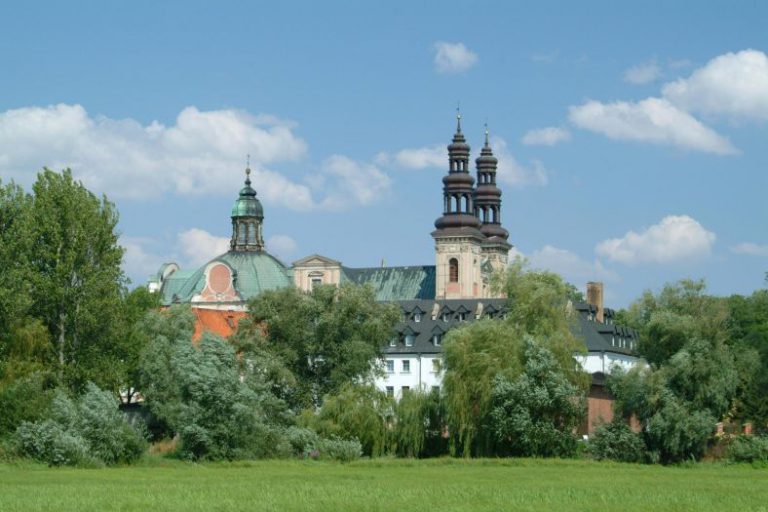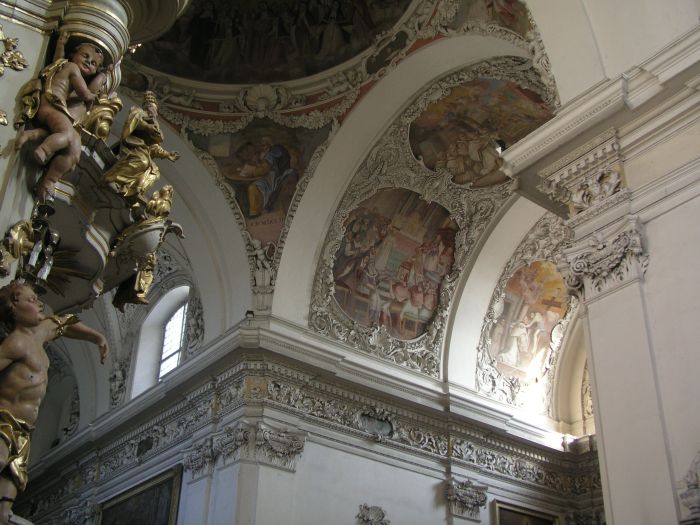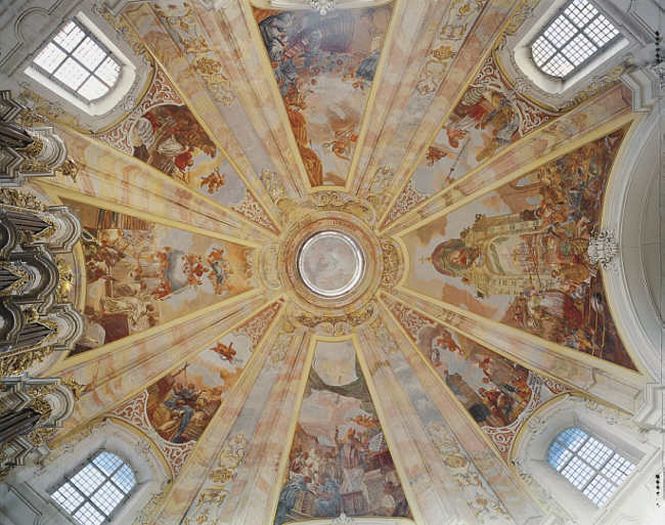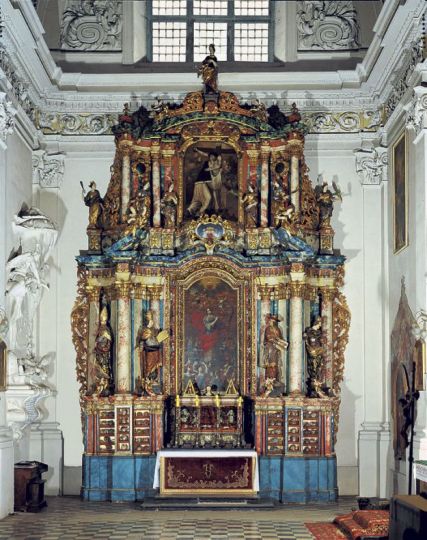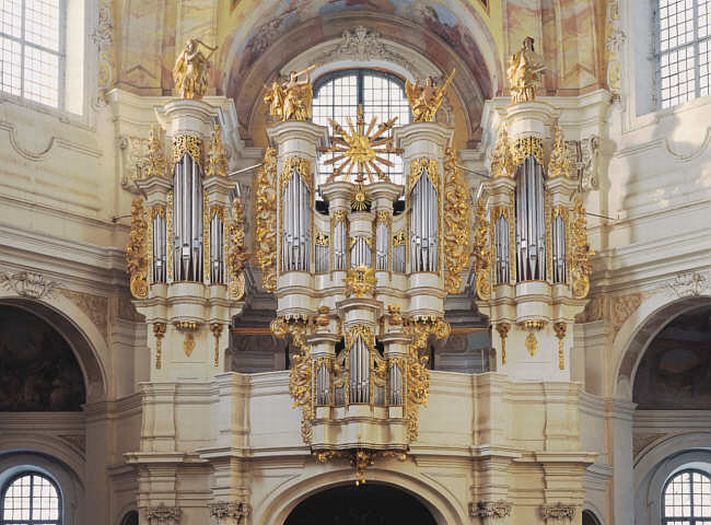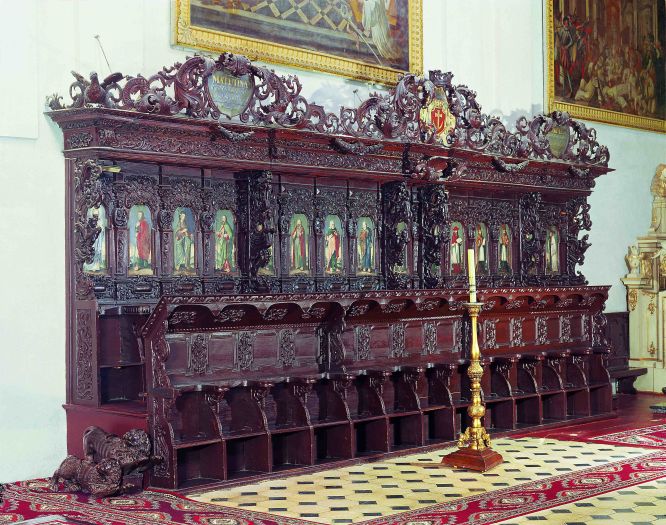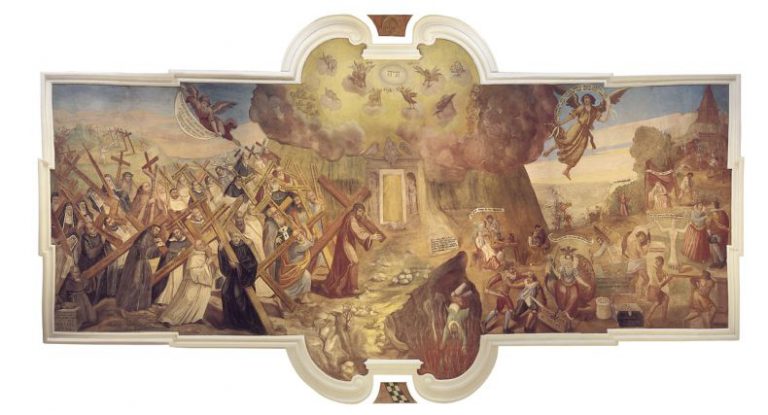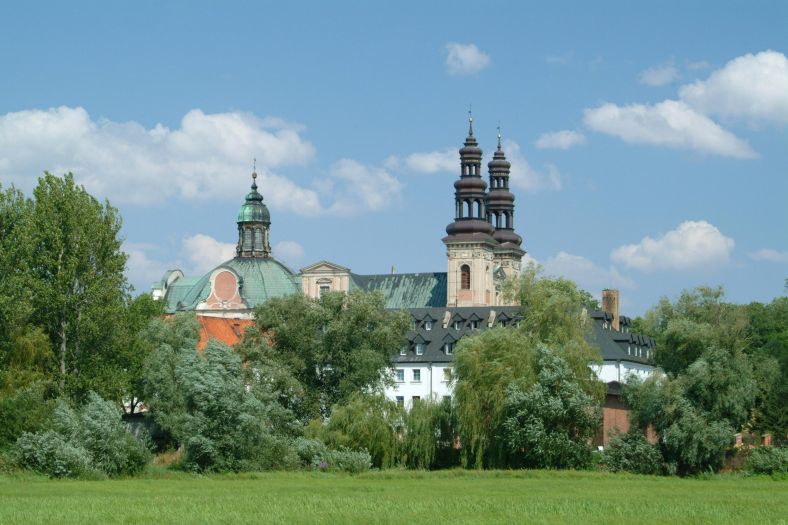
LĄD
The village is in Słupca County, about 4 km north of Zagórów.
There are traces of stone age human settlement in Ląd. There was a grad near the Warta River here in the 7th and 8th centuries, which reached its height in the 12th century. The Ląd grad is first recorded in 1136 as having paid a tithe to the Archbishop of Gniezno. Its mid-13th-century decline coincided with a nearby Cistercian settlement founded by Mieszko III the Old.
This was a German order and Poles were only accepted as “semi-converts” for ancillary work. The German monks were moved to Henryków in 1550 because the German abbot was suspected of associating with dissenters. Poles have resided in Ląd ever since.
Church property was confiscated when Ląd found itself inside the Prussian partition in 1793. The abbey was cassated when Ląd was transferred to the Russian partition in 1819. The Capuchins settled here in 1850 and renovated the buildings and initiated pastoral activity. The monastery was dissolved after the January Uprising of 1863.
In 1921, the Salesians settled in Ląd. From 1940 to 1941 (during WWII), the premises were used as a prison for Polish priests, eight of whom were beatified by Pope John Paul II in 1999.
The Salesians have run a seminary here since 1952.
Church of the Blessed Virgin Mary and St. Nicholas
The silhouette of the church in Ląd, whose towers command the surrounding district, is imposing to say the least. This baroque temple was built on the site of an earlier building which had been pulled down. Royal Architect J.S. Belotti’s (1681-1689) design was built by Tomasso (Tomasz) Poncino (1651), Georgio (Jerzy) Catenazzi and Jan Koński. Pompeo Ferrari’s central nave went up in 1728-1735, as did the cupola, with its polychrome by Georg Neunhertz. The church was consecrated in 1743.
All the furniture and fittings date from when it was built. There are 9 altars from the first half of the 18th century and the presbytery has one of the most beautiful stalls in Poland. Bartłomiej Adrian, a Cistercian monk, carved these out of oak and lime wood c. 1680. The stalls are decorated with an eagle breaking into flight over figures of saints. These symbols of devotion contrast with the reclining lions – symbols of the evil forces trampled by the monks – over the entrance. Four paintings by Adam Swach’s look down on the stalls.
The pulpit, with the figures of the four evangelists, the church fathers, and St. Bernard of Clairvaux (founder of the Cistercian order), was made in 1735. The late-renaissance tombstone of Zofia Borzemska from the end of the 16th century – brought from the original church – is underneath. The tomb of Abbot Antoni Łukomski, with its figure of Chronos, is dated 1760.
The four confessionals, adorned with the figures of the prophet David, Boleslaus the Bold, St. Peter and St. Mary Magdalene, are noteworthy as well.
The organ was built by the monk Józef Kegler in 1743, destroyed during WWI, and rebuilt in 1923-1925.


